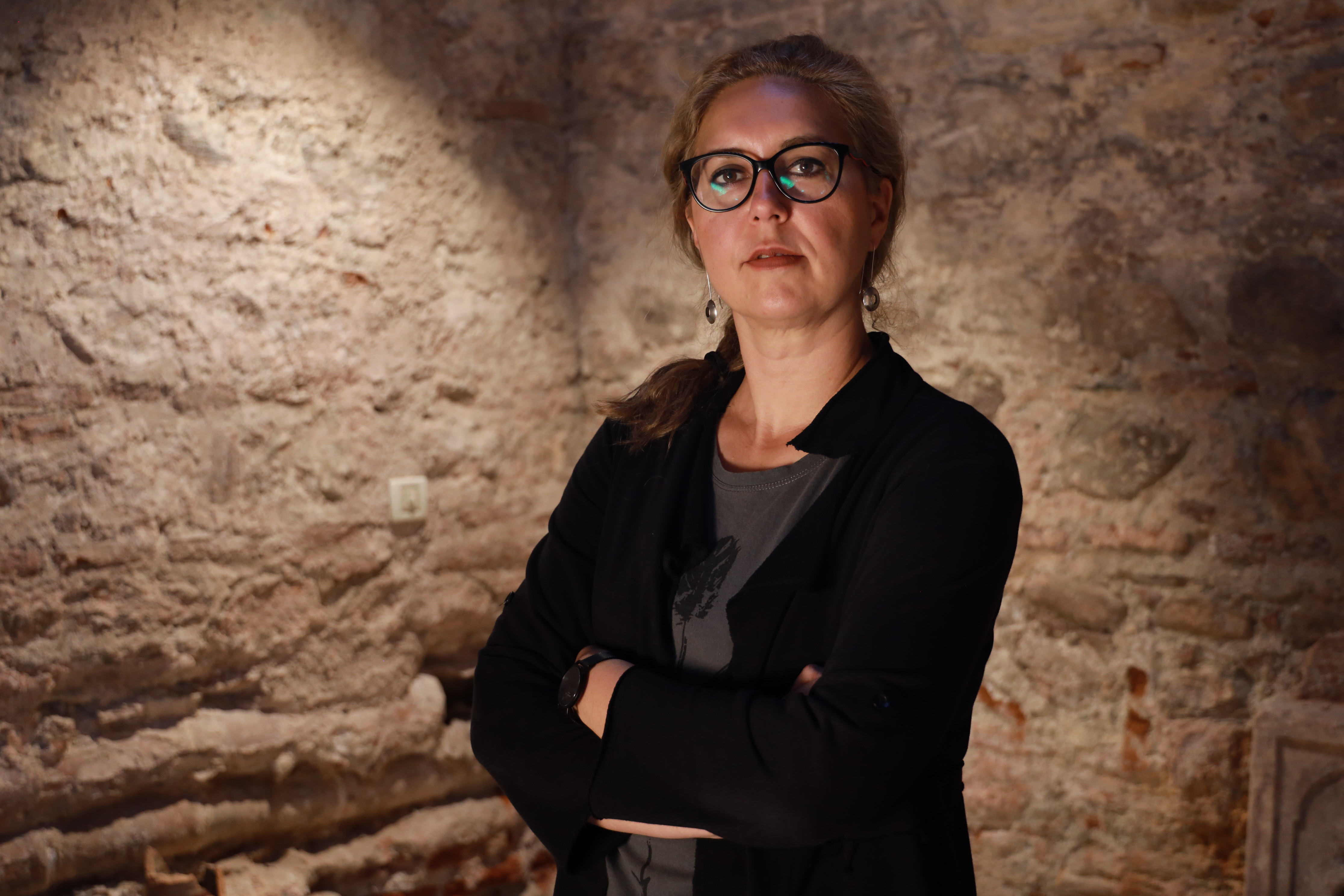Pavilion of North Macedonia
Describe your studio/work practice.
My curatorial practice is based on a direct communication with the artists, almost always from the very essence of formulation of the idea, through discussions, sharing context understanding, explaining different aspects and multilayered approaches on a particular topic, constant following of the production process, or collective selection of an adequate, previously created work (depending on the kind of exhibition) to the final execution of the project or display. My research and interests in the last few years are related with transdisciplinary and transmedial approaches in art, especially the intersections and crossing of boundaries with politics, ecology and technology, reaching the issues of today’s art relations between aesthetics, ethics and sustainability. So these contextual building blocks are often the strata to my curatorial practice and they are reached, defined, constructed in most of the projects that I am realizing.

What does participation in the Venice Biennale mean to you?
This is my third time as a curator of the Macedonian, more exactly Pavilion of North Macedonia. (2013 with the project Silentio Pathologia by Elpida Hadzi-Vasileva, 2022 with Landscape Experience by Robert Jankuloski & Monika Moteska and now, 2024 with Inter Spem et Metum by Slavica Janešlieva) and it is a big privilege and responsibility, towards your nation and state, and of course in front of the international art community. Organizing and curating the presentation on Venice Biennale means not just good art communication, but excellent managing skills, since it is a big art, political, and financial machine that, if you do not know how to handle, it will eat (overpass) you. In other words, it is a big school of survival in the world of big players, and if you continue breathing you have passed the test. As a small, and economically undeveloped country, struggling with unbelievably small budgets in comparison to all the other Pavilions even in the region, not to go beyond, that is outrageous how we do succeed in creating completely and professionally “packed” art promotion of our country.
What do you expect in terms of your career as a result of this participation?
Personally I don’t expect anything spectacular for the future of my career, but the biggest advantage of curating a pavilion on such a big international art fair is the extending of the art network, making new contacts and opening new possible collaboration paths for future. Of course, I am always learning new things and gaining new experiences.
Did you feel or sense anything during the application process or preparation that made you aware of being Central-Eastern European? If yes, what were the advantages or disadvantages of this? (eg.: financial aspect, reception)
As I mentioned before, it is not my first experience, so we are “trained” to handle the obstacles that arise, and they are all financially based, drained with the feeling of being small and hard to be heard. It turns out that the phrase “the state of limbo” is a term that explains exactly how we feel while preparing our Pavilion in Venice, being strangers, small and unimportant in the eyes of the Italians (and the international scene), and being strangers in your own country trying to explain the importance of the more prolific, financial and political, approach in our participation on such a significant international art manifestation. Luckily, I often choose projects and artists that create either provocative or approach on very actual and tangible issues so we are not struggling with the reception and public attendance at the Pavilions, but we are lacking on a bigger attention from the international media and critics, something that is usually a prepaid process.
Do you think there is such a thing as ‘Central-Eastern European-ness’ in the field of fine arts, similar to history, politics, and culture? If yes, in what ways?
Yes and No at the same time. I like to use the approach of Peter Osborne for transnationalism and Pyotr Pyotrovski’s term “horizontalism” that actually talk about no differences, art beyond borders and the same equation of the art from the West and the East in the contemporaneity. Very often I feel the strong impact of their theories, especially when I visit international exhibitions with our (eastern European) participation, and I feel proud about the coequal position (in terms of concept, approach, execution) with the Western art scene. But I think that the feeling of being a part of the East is always present, and it can also be felt in the strong and critical engaging topics (politics, social issues, justice…) of the art approach of our artists.
As a curator at the Venice Biennale, did you notice any changes in yourself during the preparation? E.g: Has your attention, taste, or opinion changed? Has your range of interests expanded? If yes, in what way?
More focused, more patience, problem solving management, not leaving space for unplanned situations, always on strike and control if all is packed properly etc.
